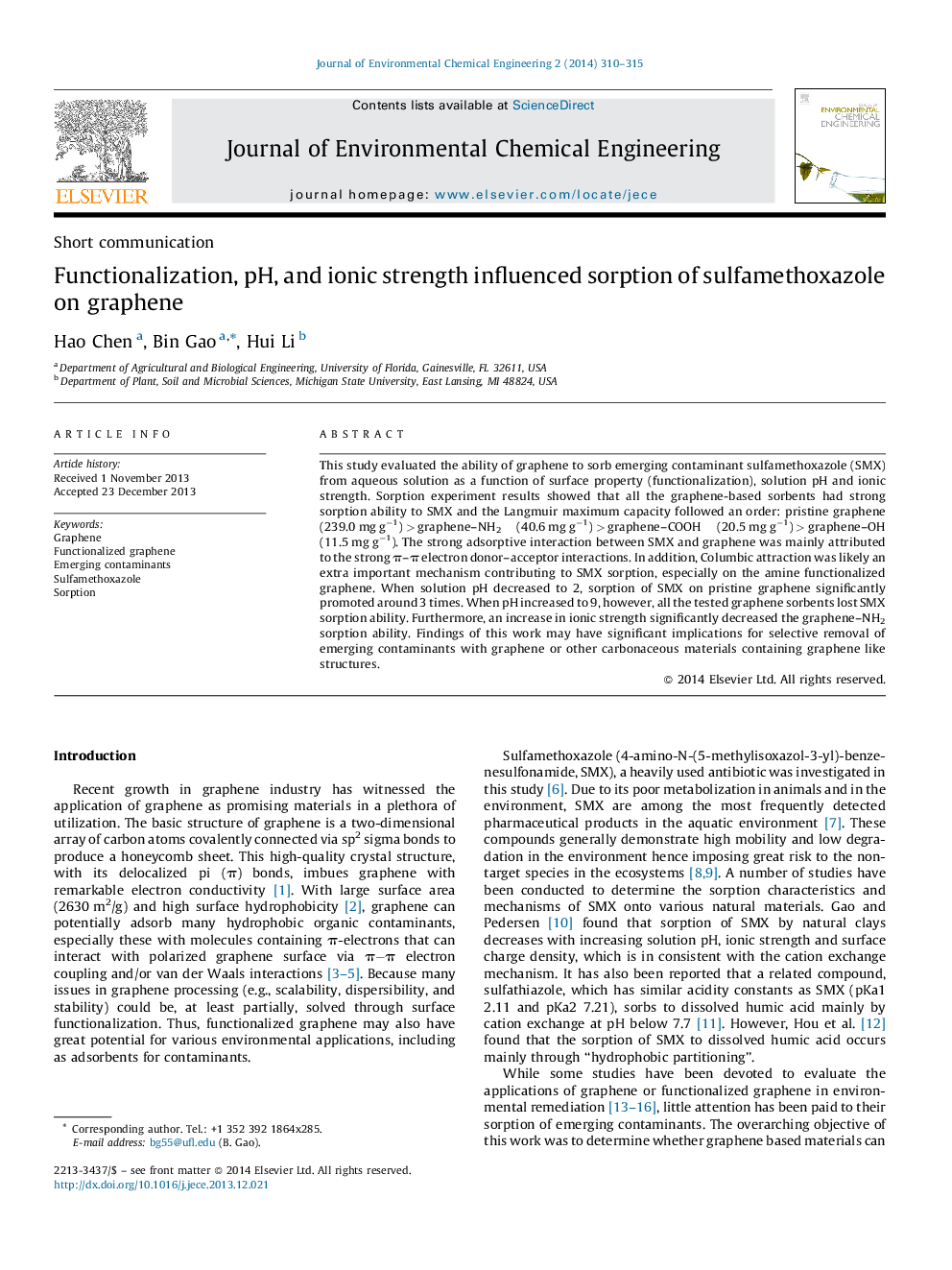| Article ID | Journal | Published Year | Pages | File Type |
|---|---|---|---|---|
| 222196 | Journal of Environmental Chemical Engineering | 2014 | 6 Pages |
This study evaluated the ability of graphene to sorb emerging contaminant sulfamethoxazole (SMX) from aqueous solution as a function of surface property (functionalization), solution pH and ionic strength. Sorption experiment results showed that all the graphene-based sorbents had strong sorption ability to SMX and the Langmuir maximum capacity followed an order: pristine graphene (239.0 mg g−1) > graphene–NH2 (40.6 mg g−1) > graphene–COOH (20.5 mg g−1) > graphene–OH (11.5 mg g−1). The strong adsorptive interaction between SMX and graphene was mainly attributed to the strong π–π electron donor–acceptor interactions. In addition, Columbic attraction was likely an extra important mechanism contributing to SMX sorption, especially on the amine functionalized graphene. When solution pH decreased to 2, sorption of SMX on pristine graphene significantly promoted around 3 times. When pH increased to 9, however, all the tested graphene sorbents lost SMX sorption ability. Furthermore, an increase in ionic strength significantly decreased the graphene–NH2 sorption ability. Findings of this work may have significant implications for selective removal of emerging contaminants with graphene or other carbonaceous materials containing graphene like structures.
